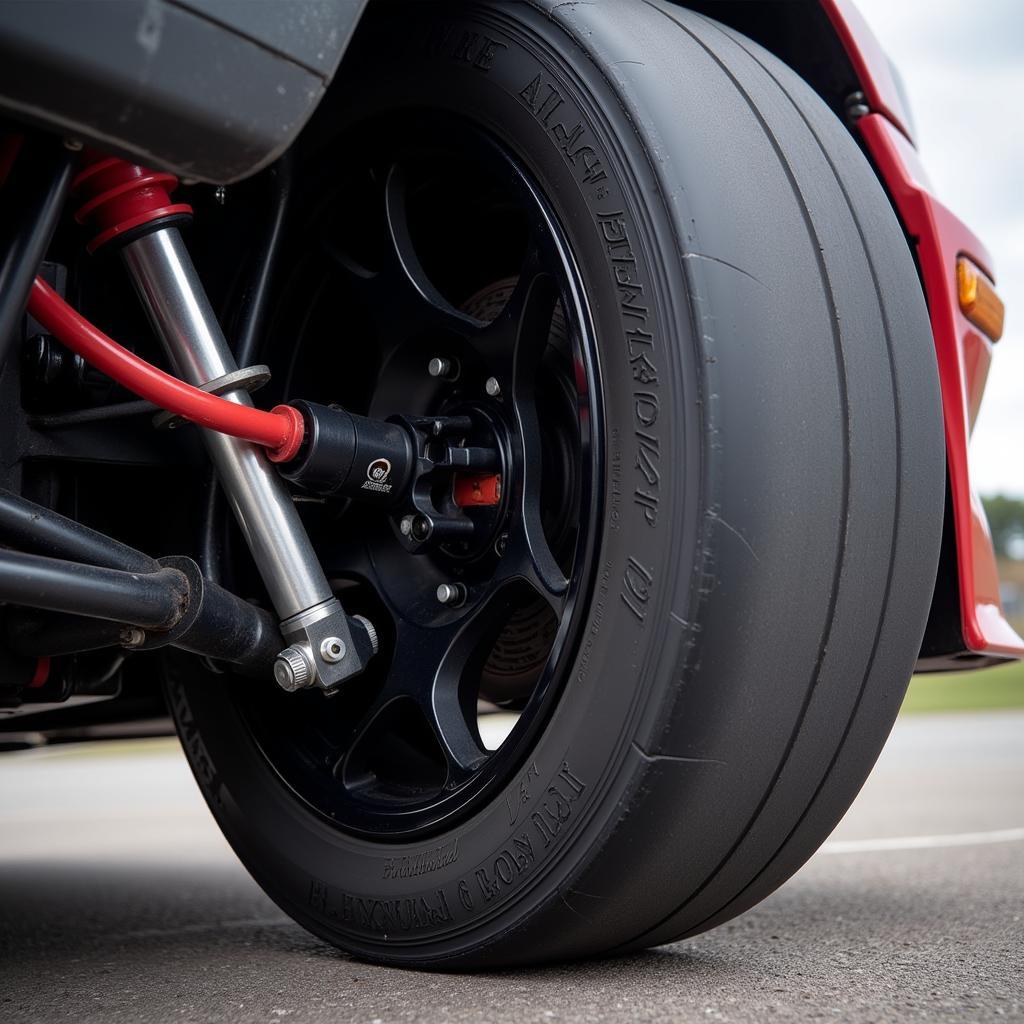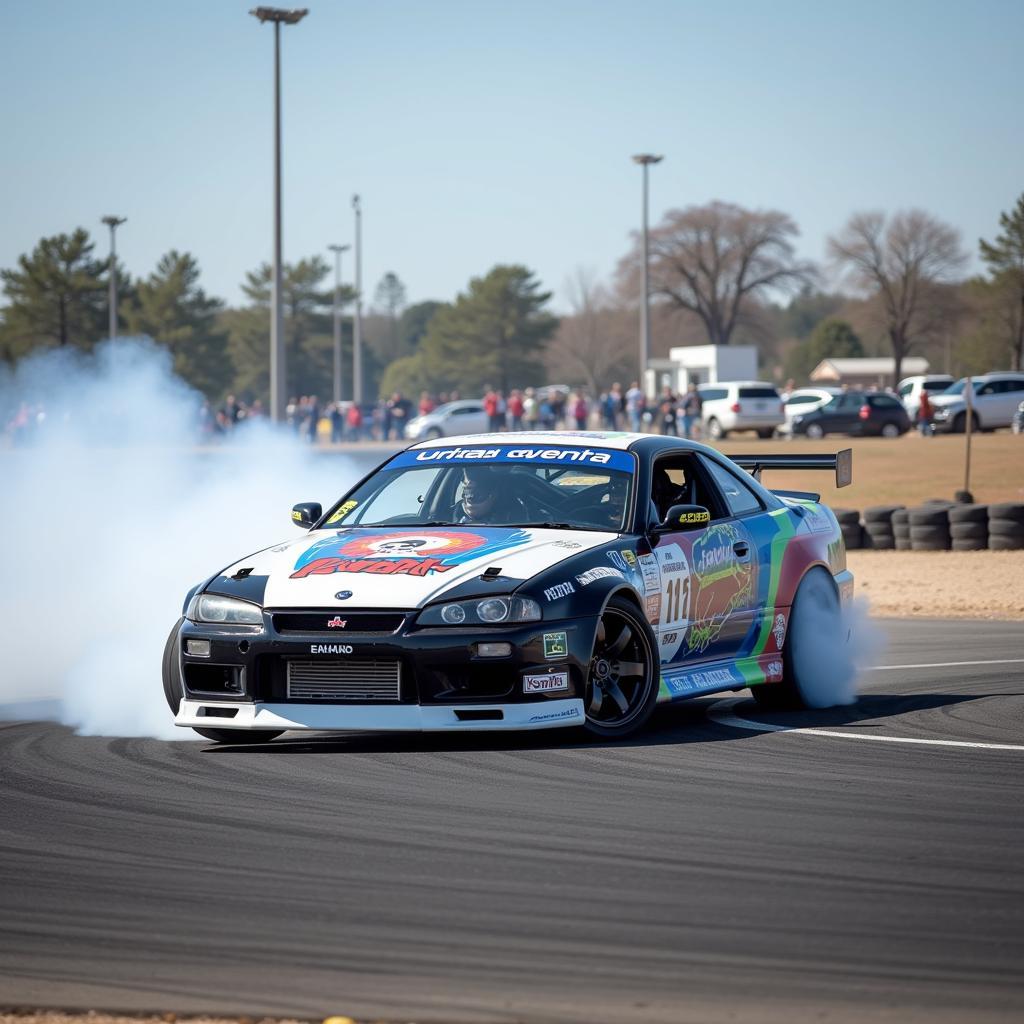Understanding Camber Drift Car Setups
November 8, 2024Camber Drift Car setups are crucial for achieving optimal performance and control during drifting. This article delves into the intricacies of camber, its role in drifting, and how to effectively adjust it to enhance your drifting experience. We’ll explore the science behind camber, the benefits it offers, and provide practical tips for setting up your drift car.
What is Camber and Why is it Important for Drifting?
Camber refers to the angle of the wheel relative to the vertical axis when viewed from the front or rear of the vehicle. Negative camber, where the top of the tire tilts inwards towards the car, is commonly used in drifting. This allows the outside tire, which carries the most weight during a drift, to maintain maximum contact with the road surface. Understanding camber is fundamental to mastering drift car control.
Negative camber optimizes tire contact during cornering, especially at high slip angles characteristic of drifting. This improved contact patch translates to increased grip and stability, enabling drivers to maintain control at the limit. Without proper camber adjustment, the outside tire can roll over onto its sidewall, reducing grip and making the car unpredictable.
 Negative Camber on a Drift Car
Negative Camber on a Drift Car
How to Adjust Camber for Drifting
Adjusting camber typically involves modifying suspension components like control arms, camber plates, or coilovers. The specific adjustment method depends on the vehicle’s suspension design. It’s essential to consult your vehicle’s service manual or a qualified mechanic for guidance. Accurate measurements and proper tools are necessary for precise camber adjustments.
Start with a moderate amount of negative camber, typically between -2 and -4 degrees, and then fine-tune based on your driving style and track conditions. Too much negative camber can reduce grip during straight-line acceleration and braking, while too little can compromise cornering grip during drifts. Finding the right balance is key.
 Adjusting Camber on a Drift Car
Adjusting Camber on a Drift Car
Fine-tuning Your Camber Setup
Several factors influence optimal camber settings, including tire compound, suspension setup, and driving style. Softer tires generally benefit from more negative camber, while stiffer tires may require less. Experimentation and careful observation are crucial for dialing in the perfect camber for your specific setup.
Consider the track layout and surface conditions when adjusting camber. High-speed tracks with sweeping corners may require less negative camber compared to tight, technical tracks. Adjusting camber based on these factors can significantly improve your drifting performance.
Benefits of Optimized Camber for Drifting
Proper camber settings provide several key advantages for drifting:
- Increased grip and traction: Maximized tire contact patch during drifts.
- Improved stability and control: Predictable handling at high slip angles.
- Reduced tire wear: Even distribution of load across the tire surface.
- Enhanced steering response: More precise control during transitions.
 Drift Car in Action with Optimal Camber
Drift Car in Action with Optimal Camber
Conclusion
Camber drift car setup is a crucial element for achieving optimal drifting performance. Understanding the principles of camber, its effects on handling, and how to adjust it properly can significantly improve your control, grip, and overall drifting experience. Remember to prioritize safety and consult with experts when making modifications to your vehicle’s suspension. With the right camber settings, you can push your drifting skills to the next level.
FAQ
-
What is the ideal camber setting for drifting?
It depends on various factors like tire compound and track conditions, typically between -2 and -4 degrees. -
How do I measure camber?
Using a camber gauge or professional alignment equipment. -
Can too much negative camber be detrimental?
Yes, it can reduce grip during straight-line acceleration and braking. -
What are the signs of incorrect camber settings?
Uneven tire wear, poor handling, and reduced grip. -
How often should I check my camber?
Regularly, especially after track days or any suspension modifications. -
Can I adjust camber myself?
While possible, it’s recommended to consult a qualified mechanic. -
What other suspension adjustments are important for drifting?
Caster, toe, and suspension stiffness also play significant roles.
Other Articles on our Website
- Understanding Drift Car Suspension Setups
- Choosing the Right Tires for Drifting
- Mastering Drifting Techniques
For support, please contact us at Phone Number: 0915117113, Email: fanyamal@gmail.com or visit us at: Hamlet 3, Binh An, Phu Thuong, Viet Nam, Binh Phuoc 830000, Viet Nam. We have a 24/7 customer support team.